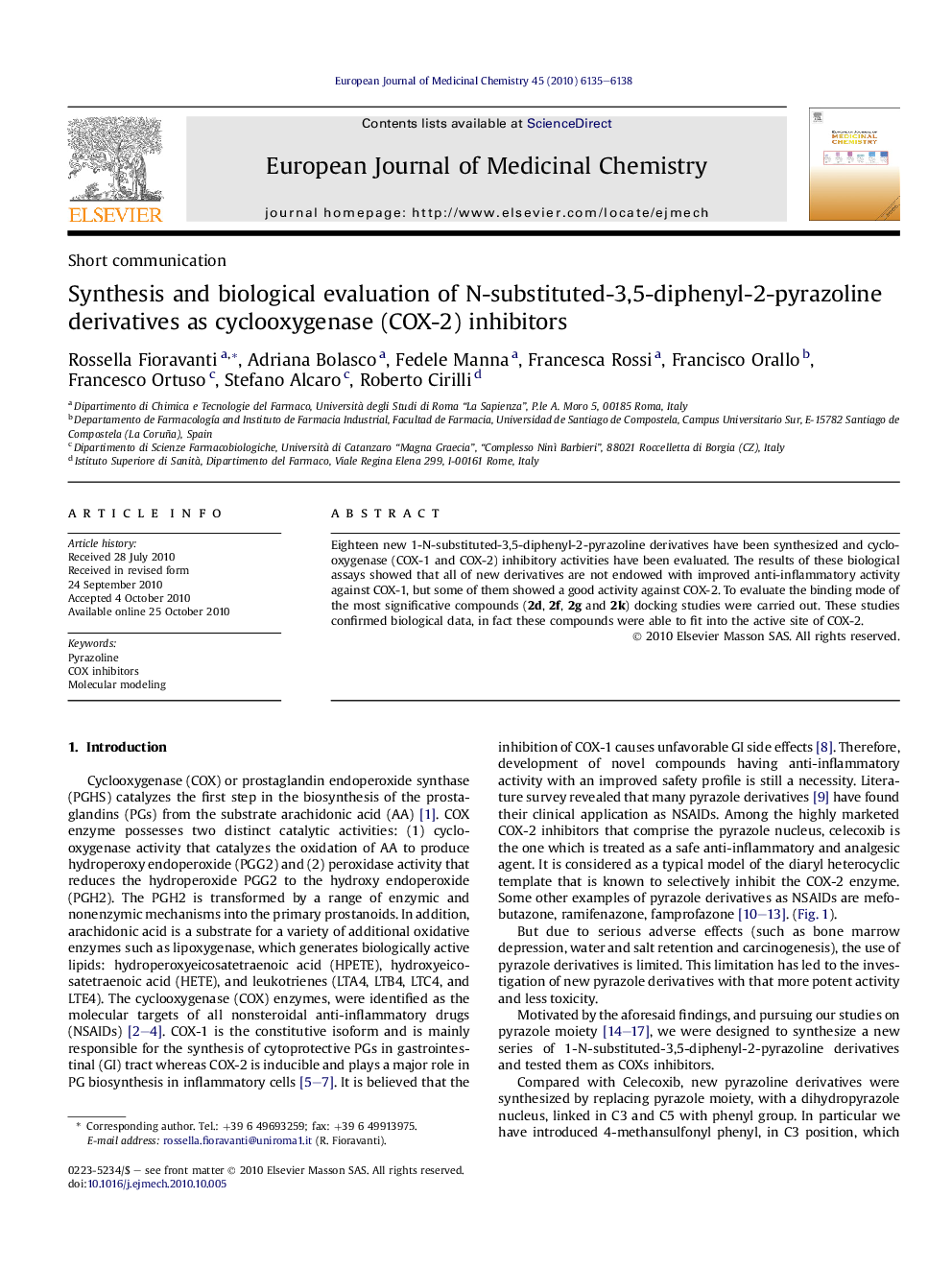| Article ID | Journal | Published Year | Pages | File Type |
|---|---|---|---|---|
| 1393158 | European Journal of Medicinal Chemistry | 2010 | 4 Pages |
Eighteen new 1-N-substituted-3,5-diphenyl-2-pyrazoline derivatives have been synthesized and cyclooxygenase (COX-1 and COX-2) inhibitory activities have been evaluated. The results of these biological assays showed that all of new derivatives are not endowed with improved anti-inflammatory activity against COX-1, but some of them showed a good activity against COX-2. To evaluate the binding mode of the most significative compounds (2d, 2f, 2g and 2k) docking studies were carried out. These studies confirmed biological data, in fact these compounds were able to fit into the active site of COX-2.
Graphical abstractIn this paper, eighteen new 1-N-substituted-3,5-diphenyl-2-pyrazoline derivatives have been synthesized and tested in vitro, as anti-inflammatory agents. The results of these biological assays showed that all of new derivatives are not endowed with improved anti-inflammatory activity against COX-1, but some of them showed a good activity against COX-2.Figure optionsDownload full-size imageDownload as PowerPoint slideResearch highlights►Cyclooxygenase (COX) catalyzes the first step in the biosynthesis of the prostaglandins (PGs) from the substrate arachidonic acid (AA). ►There are two COX: 1 and 2;. ►COX-1 is the constitutive isoform COX-2 is inducible. ►It is believed that the inhibition of COX-1 causes unfavorable GI side effects. So the development of novel compounds having anti-inflammatory activity with an improved safety profile is still a necessity.
